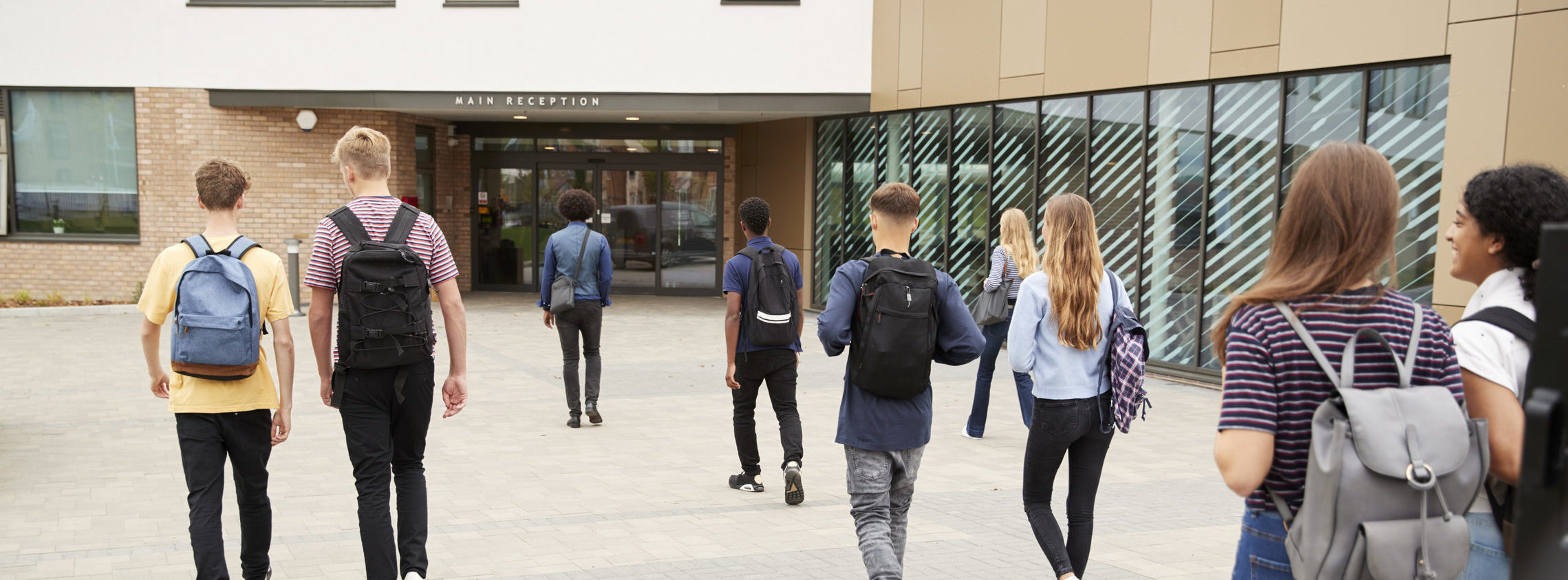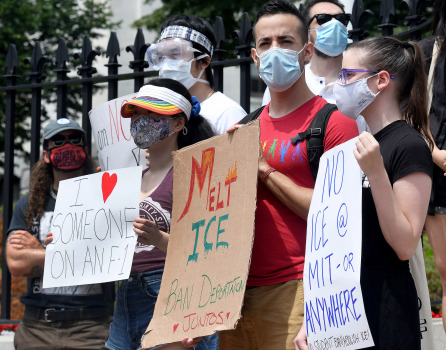
International students prevail as Trump Administration rescinds xenophobic policy
Editor’s note: CHN Intern Abby Huebler is a senior at the University of Delaware, where she is double-majoring in Economics and Environmental Studies, and minoring in Geography.
After facing multiple lawsuits and challenges by 20 states, the Trump Administration this week fully rescinded its previous directive that would have prevented international students from entering or remaining in the United States if their college classes were to be held entirely online. In a hearing during the lawsuit filed by Harvard and the Massachusetts Institute of Technology, the federal government agreed to revert the policy to the previous standard that was implemented in March.

The National Immigration Law Center tweeted, “This policy should have never even seen the light of day.”
“The Trump administration’s culture of cruelty led the way in the forming of this policy,” NILC said. “Thank you to every university, organization, and state that took action to file suits and stop this policy in its tracks.”
On July 6, the Trump Administration issued a directive that would have left international students at risk of not being able to finish their education, being required to leave the country, or being unable to come back in. The decision would have required that F-1 and M-1 students be enrolled in at least one in-person class or they would not be issued visas and would have to leave the country.
Meanwhile, many states are still experiencing an unprecedented growth in COVID-19 cases and colleges are scrambling to come up with plans for the fall semester. Some, including Harvard, Princeton, and the University of Southern California, have decided to hold all classes online. Many have announced plans for hybrid learning that will allow for some classes to be held in person but for many to remain virtual.
The rescinded directive had suggested that students make other arrangements, such as transferring to a school that is holding classes in person, if they cannot meet the requirements at their current school, leaving them just a few weeks to do so. It posed extreme and unnecessary challenges for more than one million students and would have put them in direct danger by requiring them to travel during the pandemic. It was also likely that students would have had to face issues involving internet connectivity, unstable living conditions, class scheduling for different time zones, and even lack of access to necessary resources due to internet restrictions in their country, if they were required to leave. It would have left students having already paid deposits for the year, stuck in a lease that they could not use, or without a job. The directive also posed a very real threat to PhD candidates who may not have been able to continue their research, many of whom are involved in critical COVID-19 related work. “Everything I planned for is up in the air,” Alexander Auster, a German law student at George Washington University, told the Washington Post.
The list of conflicts that would have arisen for international students and for universities as a direct result of this decision is extensive, and students and their schools had begun to rush to come up with solutions, as the directive required universities to certify that they would be holding classes in person by July 15, just nine days after the decision was announced. With class registration having already occurred, students were racing to find open spots in classes that are being held in person. At many schools, students created spreadsheets that allowed American students to swap spots with international students to ensure they could enroll in an in-person class. Some universities had created in person one-credit classes specifically for international students to enroll in.
Harvard and the Massachusetts Institute of Technology, with support from many other institutions, were the first to sue the Trump Administration two days after the directive was announced, calling it cruel and reckless. Johns Hopkins University and the state of California filed suits soon after. Massachusetts Attorney General Maura Healy stated, “The ICE rule was senseless and illegal the minute it came out.”

Students protested in front of the State House in Boston- Monday, July 13, 2020. (Jim Michaud/Boston Herald)
This directive came at a time when the United States is seeing daily records of COVID-19 cases in many states, and it was seen as a clear tactic by the Trump administration to pressure colleges into opening regardless of the continuing outbreak. A statement from the office of Harvard University’s president said, “It appears that it was designed purposefully to place pressure on colleges and universities to open their on-campus classrooms for in-person instruction this fall, without regard to concerns for the health and safety of students, instructors, and others.”
The directive used international students as a pawn by putting them at risk of university policies that are being implemented to prioritize the safety of students and staff, and, unsurprisingly, offered no rationale. “We were just a bargaining chip for schools to reopen. They didn’t actually care about us… It’s dehumanizing us,” Omer Tunc, a Georgetown student from Turkey, told the Post.
Inhumane immigration policy is not new for the Trump Administration; nor is the use of the coronavirus pandemic as a justification to implement these policies. But this was one policy that the Trump Administration quickly realized it could not defend. Not only would it have directly and immediately affected the lives of more than one million international students, it also could have created severe repercussions domestically that the Trump Administration was ignoring.
During the 2018-2019 academic year, international students contributed $41 billion to the U.S. economy and supported 458,290 jobs. Students coming from outside the U.S. often pay full tuition and the loss of this income could be detrimental to universities that already have been struggling to finance all other COVID-19 related expenses. International students accounted for 22 percent of undergraduate degrees and 54 percent of master’s degrees in STEM fields in the 2016-2017 school year, an area vital to the global competitiveness of the U.S. economy. Forcing international students to give up their education hurts them along with the United States on the global stage.
The consequences of this directive would have been harmful for universities and for the U.S. as a whole and were certainly a reason to argue against it. It is important to note the economic contributions that international students make to this country. Ultimately, however, the directive unnecessarily and inhumanely threatened the health, safety, and livelihoods of more than one million people. It created unnecessary widespread panic amid a poorly managed country-wide health crisis, and this should have been enough reason for the Trump Administration to abandon the ill-considered plan. It was enough, however, for universities and state officials to immediately condemn the decision and take action to protect international students.

